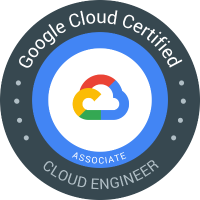Contenidos del curso
Module 1: Introducing Google Cloud.
ObjectivesModule 2: Resources and Access in the Cloud.
ObjectivesActivities
Module 3: Virtual Machines and Networks in the Cloud
ObjectivesActivities
Module 4: Storage in the Cloud.
ObjectivesActivities
Module 5:Containers in the Cloud.
ObjectivesActivities
Module 6: Applications in the Cloud.
ObjectivesActivities
Module 7: Developing and Deploying in the Cloud.
ObjectivesActivities
Module 8: Logging and Monitoring in the Cloud.
ObjectivesActivities
Module 9: Course Review and Summary.
Objectives







